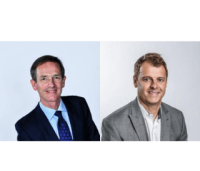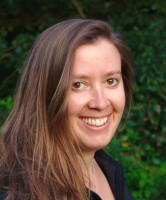Natural Catastrophes
Climate Change
Earthquakes & Seismic Hazards
Sea-level Rise & Erosion
Volcanic Eruption
Climate Adaptation & Resilience
AXA Chairs
Singapore
AXA Chair on Natural Hazards
The research project was initiated by Prof Kerry Sieh and taken over by Prof Benjamin Horton, effective from January 2021.
Towards a comprehensive panorama of natural hazards in South East Asia
As if Jakarta was lying on shifting sands… Several places of the capital city of Indonesia are subsiding with rates of about 1-15 cm per year and a few locations have subsidence rates up to about 28-30 cm per year. Such land subsidence has been reported for many years and is stressful when one knows that the city totals about 10 million people inhabiting an area of about 660 square-km today. This phenomenon, investigated by Prof. Abindin Hasannuddin (Bandung, Java) is strongly related to urban development activities in Jakarta and is driven by groundwater extraction, the load of construction, natural consolidation of alluvial soil as well as tectonic subsidence. Land subsidence obviously introduces environmental problems and affects urban development plan and process.
The explosion of the human population in the past six decades has placed a very large, double-digit percentage of the planet’s 7 billion humans at risk from natural hazards. The victims of the great 2004 tsunami are a notable case in point. Of the 350,000 inhabitants of Banda Aceh, the capital city of the northern Sumatran province of Aceh, about 90,000 perished. Had that natural event occurred just a century earlier, the loss of lives there would have numbered in the hundreds or low thousands, as the city’s total population at the time was only a few thousand. Another important consideration of the problem of natural hazards is that very long periods of repose between a region’s major earthquakes, tsunamis and volcanic eruptions lull potential victims and cultures into a false sense of security.
Prof. Sieh and his students discovered that the immediate predecessor to the 2004 tsunami happened more than five centuries earlier, so long ago that it had completely disappeared from Aceh’s collective memory. Spans of time as great as this between cataclysmic events are common. Finally, and tragically, even scientists had not anticipated the 2004 event, because no one had researched the history of previous events from the historical or geological record, let alone publicized it among those who were at risk. Prof. Sieh acknowledges that scientific issues in Southeast Asia have not been extensively explored.
Southeast Asian cities are expanding unwittingly on coastal plains that are prone to tsunamis, powerful storm surges and sea-level rise. Chains of active volcanoes that arc through Asia are slumbering menaces to the region and, in some cases, even to the world at large. Tambora’s 1815 eruption, east of Bali, for example, was much greater than the infamous Krakatau eruption of 1883 and led to famine across North America and Europe. Even smaller eruptions can be regionally or globally significant, a case in point being the Icelandic eruptions of 2010.
Climate change and sea-level rise will also strongly affect Southeast Asia. Given its significant coastal populations and large river deltas, small increases in sea level pose significant risks to a broad range of countries. Changes in temperature, precipitation and ocean acidity threaten the region’s agricultural, marine and timber-based industries, which constitute a large portion of the region’s GDP.
Most of these hazards are at present inadequately understood scientifically. The Earth Observatory of Singapore (EOS), led by Prof. Sieh, strives to foster geophysics research in three main areas: improving the comprehension of earthquake-generating faults, better understanding the inner workings of active volcanoes, and understanding climate change, namely to forecast the nature of sea-level rise and to develop enhanced monitoring of climate variables.
Prof. Sieh has looked back hundreds to thousands of years into the past to understand earthquakes. His early work led to the discovery of how often the San Andreas Fault has generated earthquakes in Southern California. This research initiated the field of paleoseismology, a geoscience sub-discipline that uses geological layers and landforms to understand the geological faults that produce significant earthquakes.
He found that the San Andreas earthquakes occurred irregularly (from fifty to three hundred years apart) but was unable to ascertain why this is so, because radiocarbon dating was too imprecise. Thus, he began working in Sumatra where he could use U-Th to precisely date corals and measure deformation. His work along the Sunda megathrust, a great undersea fault which extends under Sumatra, has revealed patterns of ancient rupture and current straining and has led to a significant success in forecasting several large earthquakes in Sumatra. This ongoing research also suggests that the megathrust is poised to produce yet another giant earthquake in western Sumatra within the next 30 years.
Prof. Sieh is member of the US National Academy of Sciences, one of the highest honours that can be accorded a US scientist. He has also been elected as a Fellow of the two main American professional earth science organizations, the Geological Society of America and the American Geophysical Union.
With the endowment from AXA, Nanyang Technological University has established the AXA-Nanyang Chair in Natural Hazards at the EOS with Prof. Sieh as inaugural incumbent. These funds will enable one of Singapore’s five Research Centers of Excellence to become an enduring pillar in earth science research and dissemination in the region, creating multidisciplinary research programs: creating cross-disciplinary connections to the risk assessment and management, policy, economic and educational domains of natural hazards and climate change as well as strengthening integrated research capabilities through joint appointments with other research entities at NTU.
To add or modify information on this page, please contact us at the following address: community.research@axa.com
May 2022
Related articles
Climate Change
Finance, Investment & Risk Management
Societal Challenges
Climate Adaptation & Resilience
Insurance & Risk Management
Environmental Justice
Civil Society & Governance
AXA Project
Italy
AXA Research Lab on Climate Change, Risk and Justice
In response to three research questions: How can the private and financial sectors contribute to a just transition to a... Read more

Gianfranco
PELLEGRINO







